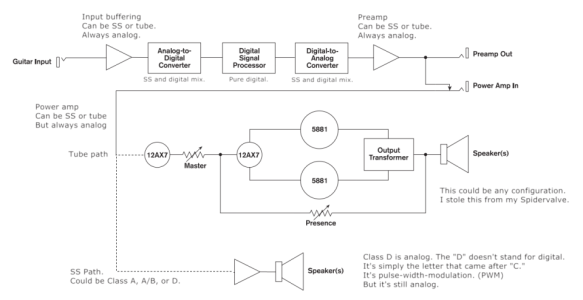Rex_Rocker
Well-known member
Well, the DT50 is essentially a POD HD with a tube poweramp, LOL. So not far off from what I was arguing could keep up with the big boys. I take it you just don't like the Axe FX?50W and below: Line 6 DT50 (still the honeymoon period? ...can't say...), AMT Stonehead & Cicognani Brutus Live
I did have a POD HD at one point. Cool platform for sure, but they definitely shot themselves in the foot by not including IR capabilities when everything else it was competing against at the time was able to load IR's. But that's not really a problem when you're running it through a tube poweramp a good cab.
Last edited:


